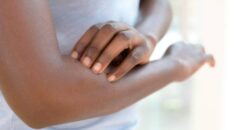
As a baby, the belly button is a hot topic for new moms. They spend countless hours cleaning what's left of their umbilical cord to make sure that your first scar doesn't become your first infection.
But, as adults, we tend to forget about that part of our body. And in many cases, a quick graze over the navel with soap and water just isn't enough. A 2012 research study, A Jungle in There, resulted in identifying 2,368 types of phylotypes of bacteria living within 60 belly button samples. This included good and bad bacteria.
READ: Oh, So That's How You Clean Ears!
According to board-certified dermatologist Alexandria V. Booth, M.D. quoted in Women's Health, health providers have been known to find a mix of lint, dirt, sweat, bacteria, soap, and lotion in the belly button.
In some cases, people have made doctor appointments because they believe they have symptoms of cancer, only to learn that they have an infection.
Symptoms of a belly button infection include swelling, pain, itching, redness, odor, or discharge. People with particularly hairy navels, navel piercings, or “innies” should take extra precautions in their hygiene regimen.
Belly button yeast infections are more common in the following groups:
- Pregnant women
- People who are overweight/obese
- People taking antibiotics. Antibiotics can kill the bacteria that normally live on your skin. This allows Candida to grow and thrive.
- People who are receiving cancer treatment like chemotherapy.
Belly button yeast infections are also more common in people with weakened immune systems. If you have HIV/AIDs or diabetes, you have a great chance of developing a yeast infection.
Dig In!
While the more obvious way to clean out the belly button is to dig in with a washcloth during a shower, many dermatologists recommend also using an astringent, like witch hazel or alcohol, and a cotton swab.
They suggest cleaning the belly button when you shower in addition to using an astringent at least once a week.
READ: Q&A: Why Do My Body Piercings Stink?
Dip the cotton swab into the astringent and swipe the inside of your belly button.
Be gentle, you don't want to irritate the skin.
Remove the cotton swab, dip the opposite side into the astringent, and swipe your belly button again.
Continue to do this until your belly button is clean.
READ: 10 Ways To Prevent Spreading Hepatitis C
Then, use a dry cotton swab to remove any of the leftover astringent. Though some astringents are great for cleaning, they may also cause dryness.
If your skin feels dry after you are done cleaning, rub a small amount of moisturizer or ointment on your belly button to prevent further dryness and irritation.
It may feel a little weird to clean your belly button with a Q-tip the first few times. But trust us, it's a lot more comfortable than having a doctor tell you that the itching around your navel is caused by poor hygiene
Losing weight may also help prevent the overgrowth of yeast in your navel region. If you have diabetes, be sure to maintain proper blood sugar control.
It's also a lot more comfortable than learning that you didn't get lucky on the last date because your significant other picked up on a foul odor on the way down.
Seeing a doctor
You should see a doctor if you are experiencing any telltale symptoms. Your healthcare provider will test a sample of the infected area using a tongue depressor or scalpel to be further examined by a lab technician or culture (a substance that allows the sample to grow so the fungus can be identified).
RELATED: Find A Doctor Here
From there, he or she can help you come up with a treatment plan, which will include testing to see if you have diabetes, antifungal medication and keeping the area clean.
Learning you have a belly button yeast infection may come as a shock, but the good news is that these infections usually clear up in two weeks as long as you keep the area clean and dry.








